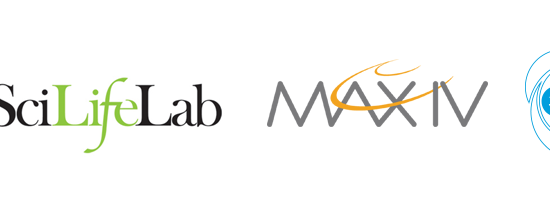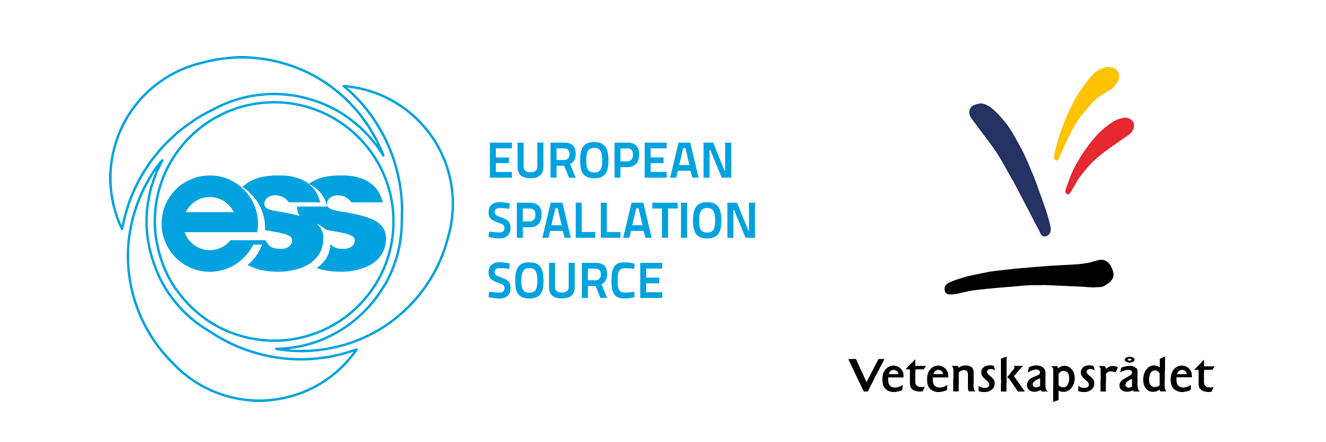by Anton Zubayer Neutron optics are essential parts of neutron scattering facilities, where they guide, collimate, focus, and polarize the neutron beam tailored to each beamlines experiments. The most common neutron optics are multilayer neutron optics which are characterized by alternating layers of materials. For polarizing neutron optics, one of the layers must be magnetic […]
ESS
The Onset of Molecule-Spanning Dynamics in Heat Shock Protein Hsp90
by Felix Roosen-Runge Proteins are the biomacromolecular motors of life. While earlier accounts stressed the lock-key concept of protein function, a more complete understanding needs to take into account motions and molecular flexibility as ingredients how specific functions can be performed. In particular, larger conformational changes are known to reflect allosteric changes from active to […]
Interaction of a Histidine-Rich Antimicrobial Saliva Peptide with Model Cell Membranes: The Role of Histidines
by Amanda Eriksson Skog, Yuri Gerelli and Marie Skepö Here we present a continuation study of our previous paper, Spontaneous Formation of Cushioned Model Membranes Promoted by an Intrinsically Disordered Protein, in which we found that upon the interaction of Histatin 5 (Hst5) with a model lipid bilayer, a peptide cushion spontaneously forms underneath the […]
A Comprehensive Experimental Approach to Multifunctional Quantum Materials & their Physical Properties – Geometry and Physics in Condensed Matter
by Elisabetta Nocerino Symmetry-breaking phenomena underpin various intriguing physical properties in condensed matter such as magnetism [1,2,3,4] and superconductivity [5,6]. Understanding such fundamental properties holds significant importance for the development of cutting-edge technologies, including spintronics, quantum computing, and advanced magnetic materials, as well as foster innovation in energy-related applications [7]. The crystalline solid NaCr2O4 represents […]
A guide to spatially resolved phase and texture evaluation by diffraction contrast neutron imaging
The physical properties of structural as well as functional components are largely governed by the materials microstructure. In polycrystalline materials, the crystallographic phase and preferred grain orientation (texture) can dominate the physical properties. A range of microscopy and diffraction techniques are hence routinely used for their characterization, but are prone to miss local variations across […]
Important information from ESS regarding the VR Grant for Accessibility to Infrastructure
The ESS is asking for draft proposals for The Swedish Research Council’s “Grant for Accessibility to Infrastructure” no later than August 10, along with draft letters of support.
The Swedish Research Council’s Grant for Accessibility to Infrastructure
The Swedish Research Council has been mandated by the Swedish Government to work towards ensuring Swedish researchers participate to a greater degree in the construction and development of research infrastructure, and towards making research infrastructure more accessible and more used by the business and public sectors. Type of call Research infrastructure support Subject area Research […]
The Swedish Government presents a national strategy for ESS
The Swedish Government just presented a national strategy with the overall objectives for the Swedish participation in and hosting of the international European Spallation Source (ESS) research facility, currently under construction outside of Lund. The government’s premise is that the ESS is a unique opportunity for Sweden as a knowledge nation, which is also strengthened […]
Industrial pilot projects for neutron and photon experiments in large scale research infrastructures
In this call notice, Vinnova announces their financial support for pilot projects that build expertise on industrial utilization of advanced experimental environments similar to those developed at MAX IV and ESS in Lund. The work in the project will be verified of how neutron or photo technique is suitable for meeting a company’s problems or development needs.
Call to register interest in future in-kind contributions to the ESS (in Swedish)
The Swedish Research Council invites Swedish universities to send in their notice of interest for future in-kind contributions to the ESS. For more information and instructions, see the PDF document below or click this link (in Swedish only). The deadline for submitting your proposal is 20 May 2018.


